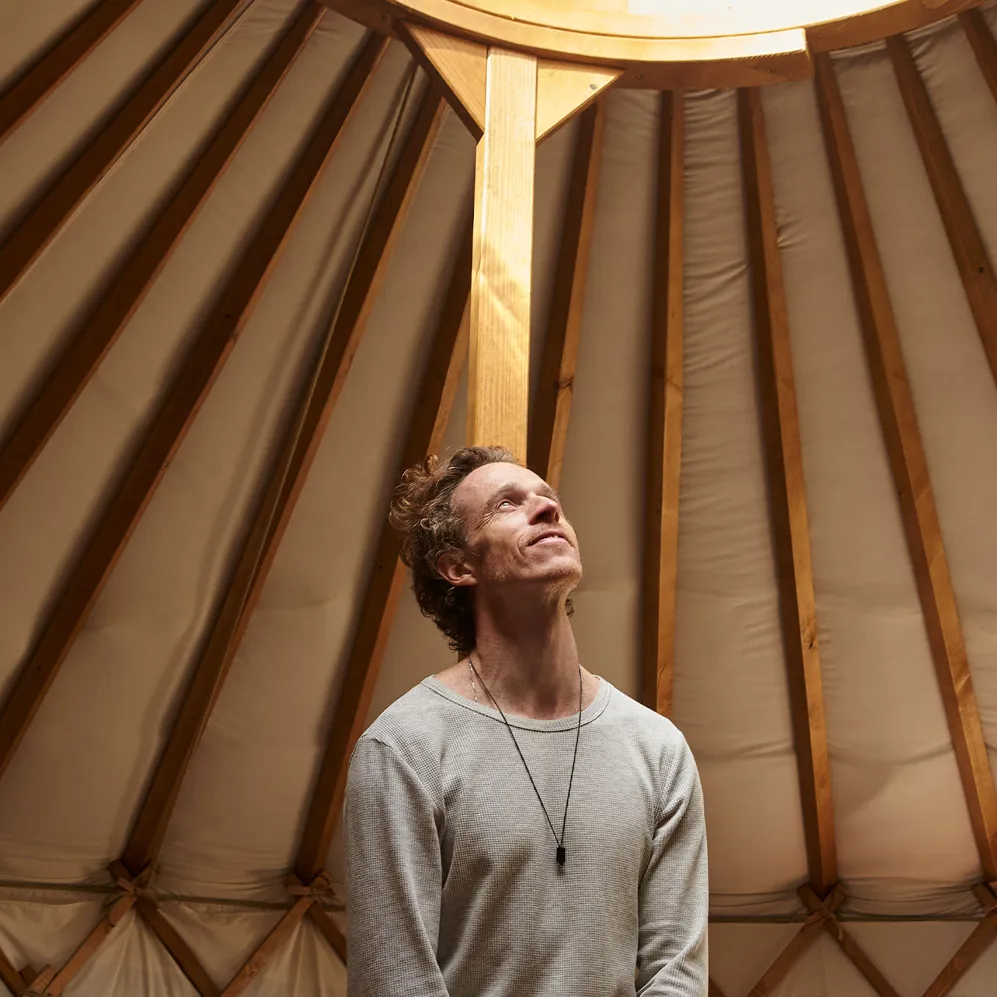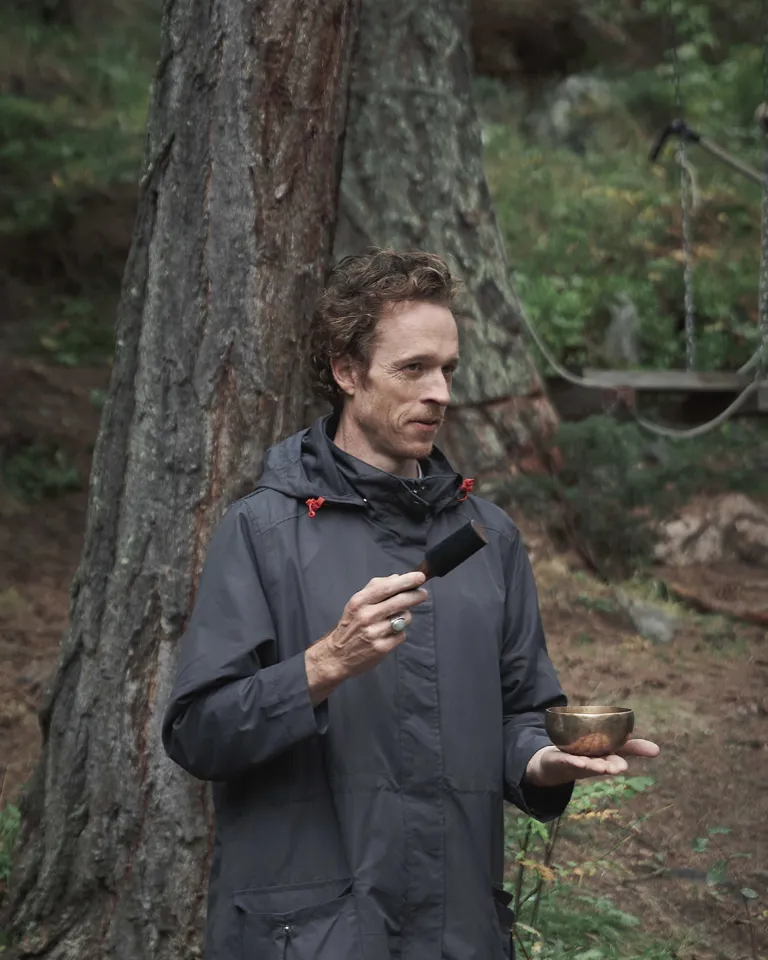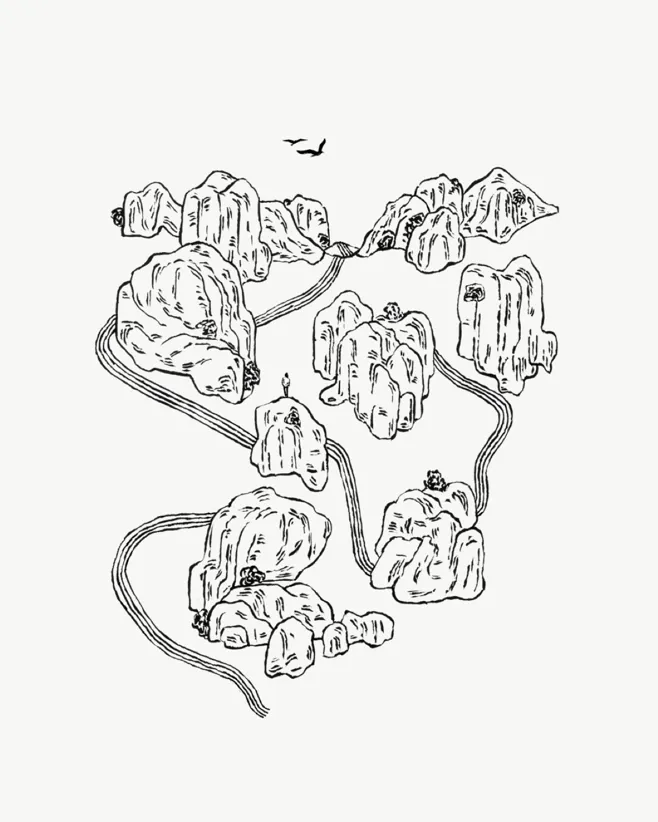
Image Jaclyn Locke
Words Allison Reiber DiLiegroDate 14 October 2021
He was navigating the streets of Genoa with the sounds of cars whizzing and Italians bantering as his backbeat. It seemed a stark contrast to the moment we met Creighton, trailing behind as he led a meditative walk through the earthy, sweet-smelling mountain paths of Zermatt, Switzerland. While these two walks sound like opposing sides of the mindfulness spectrum, he is of another opinion: “Every walk has the power to be a mindful one. It’s all about how you frame it.”

So how does one transform the simple act of moving from point A to point B to something more holy? As Creighton explains, it’s not so difficult: “Any time you can bring mindfulness into the moment, you come into the present. And that’s where there are benefits.” On a long walk together (naturally), Creighton answered our questions on how to make any walk, whether through the city, the country, or an entirely new destination, a moment for mindfulness.

Image Jaclyn Locke


A poem by one of Creighton’s favorite poets
We know that the default state of the mind in the present is contentment. When our mind is time-traveling—jumping to the future and the past—we pick up stress, anxiety, and depressive impulses. When we’re mindful, we’re automatically in the present. And this is when we can function at our most loving to ourselves and those we encounter.
At a very basic level, walking takes us away from screens—ideally our phones as well. The very simple cadence of walking helps to bring us to a place of focus. And it creates good conditions for becoming more mindful.
That means no music or podcasts, either. Not possible? Keep it tucked away.
Even if you’ve taken the same route many times, try to come into it with a beginner’s mind.
Our brains have the tendency to categorize everything. Instead of judging people, try to wish them peace.
The interesting thing about urban walking is that you encounter people, which can help you recognize the ego. Every time you encounter someone, there will be an impulse to judge that person: this is a wealthy person, this is a poor person, this is someone I find attractive, this is someone I don’t find attractive. The ego tends to classify everything as good or bad.
If you’re walking through the forest, you don’t classify a tree as a good tree or a bad tree. You just recognize them as trees. We have this serene neutrality around trees. It can be a beautiful exercise to try to observe people in an urban setting as trees—to try to disrupt the categorizing function. And the way you disrupt it to simply step back and watch it.
You realize that you’re judging without any information about people, which shows how often you could be wrong. I think this allows you to suspend judgment for a little bit. We can have such beautiful lives when we have no opinion.

It can be useful to have a notion of playful curiosity. I think that playful curiosity is the best way to deal with being a human.
In a Sharon Salzberg talk, she suggests that, as you walk down the street and encounter people, try to generate a feeling of love for them. Your mantra can simply be, “may you be happy” or “may you be at peace.”
Like, right now, kids are running and they’re loud, and it’s making it harder for me to hear you. But is there a part of me that can feel love for them? Yes, I want them to be happy, I want them to be loud, even if it makes our conversation more difficult.
We tend to have this feeling that we see something once or twice and we’re an expert on it. Shunryū Suzuki, the Zen teacher, used to say, “In the beginner's mind there are many possibilities, but in the expert's there are few.” When you can go on your walk with a beginner’s mind, that can make a big difference.
During the pandemic, I would walk with a friend and sometimes we would say, “Let’s walk down this street as if we’ve never seen it before—like we just got off the plane.” And we would start to notice things: architecture and design, trees that we hadn’t seen before. And there was something empowering about that.
The world is made up of molecules and wavelengths. And trees and rocks, for example, have different vibrational frequencies and you can sense this. This is the reason people hug trees. Or why you can feel the positive vibrations from your cat.
In nature, you can be curious about what’s going on with your body. Like when you’re at a festival and there are multiple stages, you may walk away from the Gabber stage and walk towards the Dub Reggae stage, or whatever calls you. When you’re in nature, rather than being drawn by visual elements, allow yourself to navigate by the vibrations you feel in your body.

Of course, I say this from a male point of view and cities are not always safe for women. But I think it can be wonderful, assuming you feel safe, to allow for instinct and mystery to lead you as you walk through a city.
Terence McKenna used to say, “The universe may not only be stranger than we suppose; it may be stranger than we can suppose.” And I think that if you can navigate a city without your phone, you’re bringing a sense of adventure into your life. And adventure makes you feel more autonomous.
The great disadvantage of our dependence on our phones is that it’s making us less and less autonomous. We trust the map rather than our own navigational system in our hippocampus. We trust the restaurant suggestion rather than following our nose.
I think it’s important to give ourselves as many opportunities for adventure as possible. Because the ramifications of this are huge: When we trust ourselves, it’s easier to be in relationships with other people. It’s easier to find a purpose. And the more we outsource, the less we trust ourselves as autonomous beings. I don’t care if I end up having a horrible coffee. If I find the place myself, it tastes better.

We’ve compiled a collection of meditative walks with our hotels as a starting point. Click below to start your journey, both inward and out.